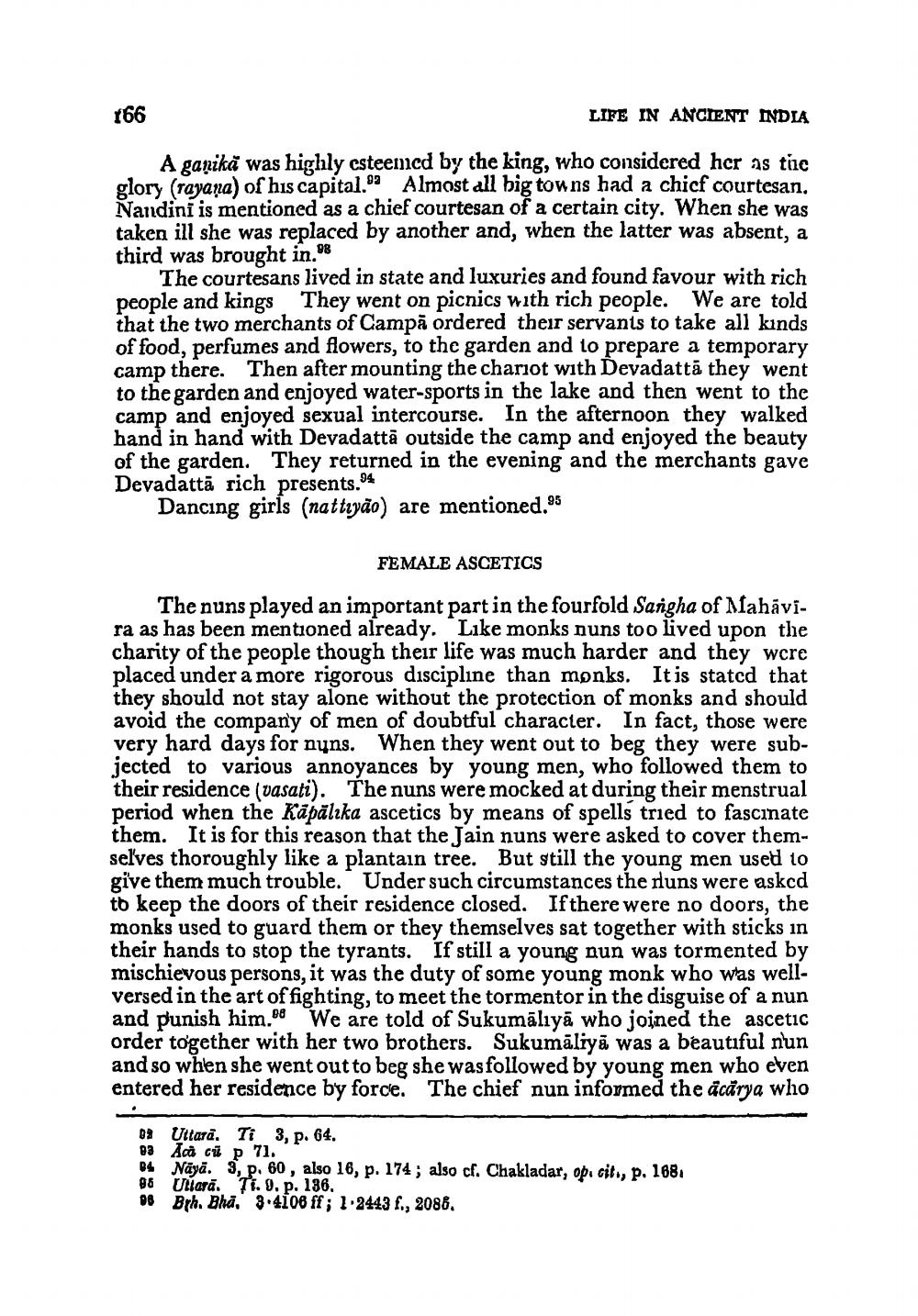________________
166
LIFE IN ANCIENT INDIA
A ganika was highly csteemcd by the king, who considered her as túc glory (rayana) of his capital. Almost all big towns had a chicf courtesan. Nandini is mentioned as a chief courtesan of a certain city. When she was taken ill she was replaced by another and, when the latter was absent, a third was brought in."
The courtesans lived in state and luxuries and found favour with rich people and kings They went on picnics with rich people. We are told that the two merchants of Campā ordered their servants to take all kinds of food, perfumes and flowers, to the garden and to prepare a temporary camp there. Then after mounting the chariot with Devadattā they went to the garden and enjoyed water-sports in the lake and then went to the camp and enjoyed sexual intercourse. In the afternoon they walked hand in hand with Devadattā outside the camp and enjoyed the beauty of the garden. They returned in the evening and the merchants gave Devadattā rich presents.94
Dancing girls (nattiyão) are mentioned.95
FEMALE ASCETICS
The nuns played an important part in the fourfold Sangha of Mahāvi. ra as has been mentioned already. Like monks nuns too lived upon the charity of the people though their life was much harder and they were placed under a more rigorous discipline than monks. It is stated that they should not stay alone without the protection of monks and should avoid the company of men of doubtful character. In fact, those were very hard days for nuns. When they went out to beg they were subjected to various annoyances by young men, who followed them to their residence (vasati). The nuns were mocked at during their menstrual period when the Käpälika ascetics by means of spells tried to fascinate them. It is for this reason that the Jain nuns were asked to cover themselves thoroughly like a plantain tree. But still the young men used to give them much trouble. Under such circumstances the runs were asked to keep the doors of their residence closed. If there were no doors, the monks used to guard them or they themselves sat together with sticks in their hands to stop the tyrants. If still a young nun was tormented by mischievous persons, it was the duty of some young monk who was wellversed in the art of fighting, to meet the tormentor in the disguise of a nun and punish him. We are told of Sukumālıyā who joined the ascetic order together with her two brothers. Sukumäliyā was a beautiful nun and so when she went out to beg she was followed by young men who even entered her residence by force. The chief nun informed the acārya who
09 Uttara. Ti 3, p. 64. 03 Acä сü p 71. 04 Näyā. 3, p. 60, also 16, p. 174 ; also cf. Chakladar, op. cit., p. 1881 88 Uliarā. Ti. 9. p. 136. 98 Bth. Bha, 3.4706 ff; 1.2443 f., 2086.




